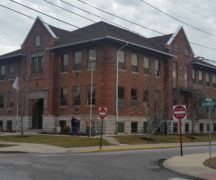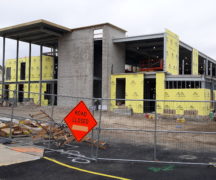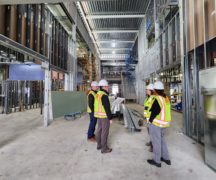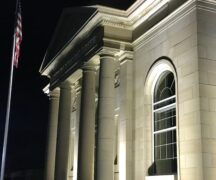By JAN LARSON McLAUGHLIN
BG Independent News
Bowling Green City Council will get a list Monday evening explaining the deficiencies of the current city administration building.
The building’s age, size and configuration often result in an overflowing council chambers, is barely ADA accessible, and has inadequate security.
The city administration building began its life more than a century ago as a school. It then was turned into a library, and in 1976 became the city administration building. The result is a 17,000 square foot building with cramped offices, maze-like spaces and cobbled together technology.
The list makes clear that “these deficiencies include, but are not limited to” the following:
- Inadequate and uncomfortable space for public meetings. Capacity in the City Council chamber is 66 – and the number of available seats are reduced once the council members, clerk and reporters get in the room. Overflow into the hall, which is not equipped or comfortable for those attending, is a regular occurrence and not an acceptable practice under the state’s Sunshine Laws that require open meetings.
- Efficient and effective service delivery to citizens is impeded by the building layout and conditions. Those who have waited in the frequent lines in the basement offices can share that not only is the space uncomfortable, privacy is almost non-existent. These offices are often dealing with sensitive information, such as taxes and bills, and private consultation is needed.
- Offices have been partitioned out of former classrooms built with permanent load bearing walls. This not only creates a maze, but makes flexibility challenging. Over the years, the city has examined better ways to serve citizens – such as a drive-thru for the utilities business office. But space constraints don’t allow such changes.
- Handicapped accessibility is challenging. The city added an elevator in the 1980s, but navigating the cramped offices is a trial. Despite efforts to improve accessibility to the restrooms, they are not very accommodating.
- Security is inadequate for employees and visitors.
- Mold remediation has been conducted numerous times in the building.
- Technology is regularly impacted by building constraints. These concerns range from detrimental climate conditions in the basement server room to challenges of providing basic technology expected in a modern workplace.
- Building maintenance costs are considerable, and the city has deferred maintenance on some items. In the next few years, considerable issues will need to be addressed, including a roof and HVAC overhaul.
“The City Hall facility is at a point where changes must be made,” the report to council states.
So on Monday, City Council is being asked to hear the first reading of an ordinance allowing the city to enter into contracts for a building feasibility study. The site evaluation will cover three contiguous properties owned by the city – the city administration building at 304 N. Church St., the Wood County Senior Center at 305 N. Main St., and a residence at 316 N. Church St.
The ordinance asks council to put $50,000 toward the feasibility study. The city’s Board of Public Utilities already voted to put its $50,000 in for the study.





